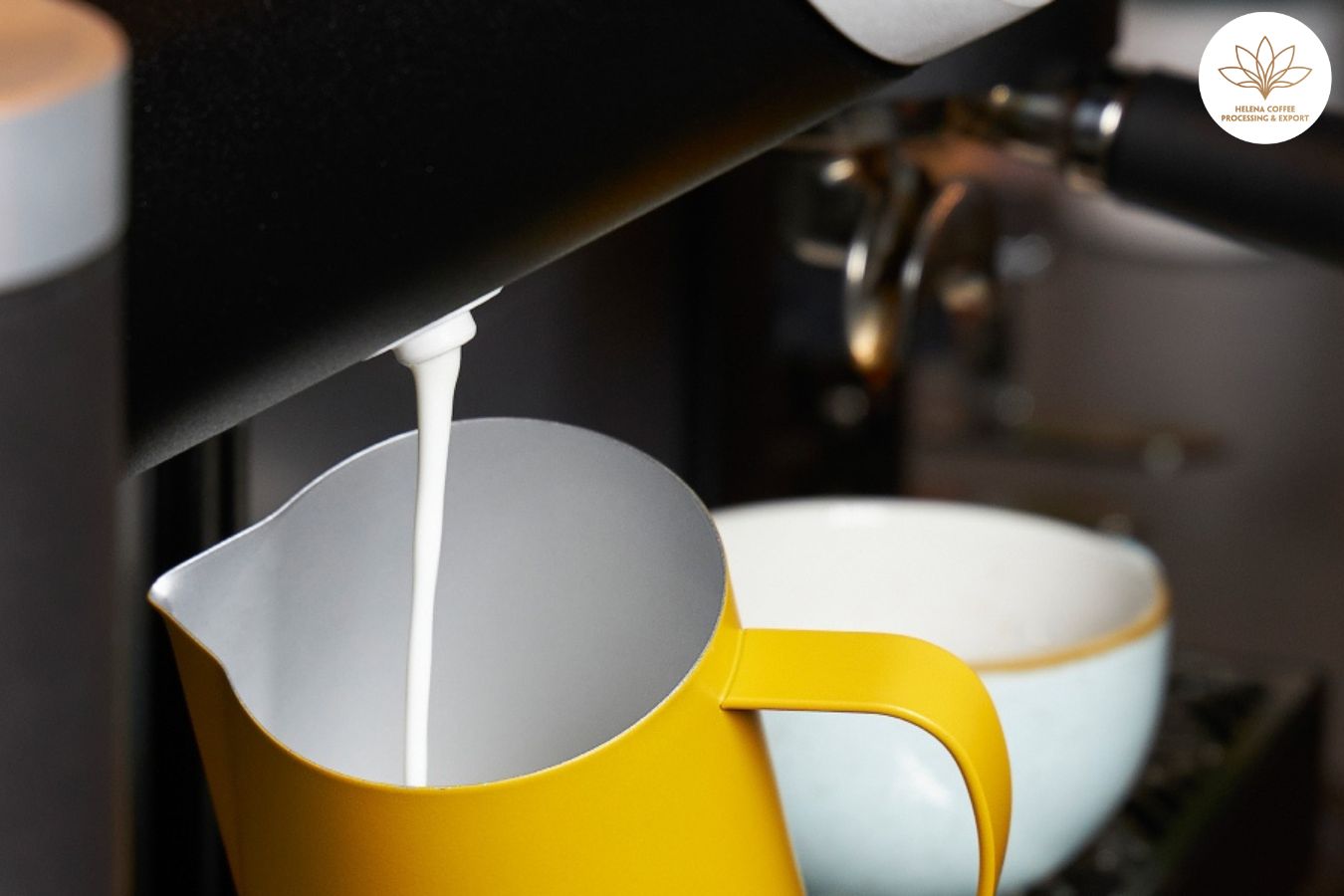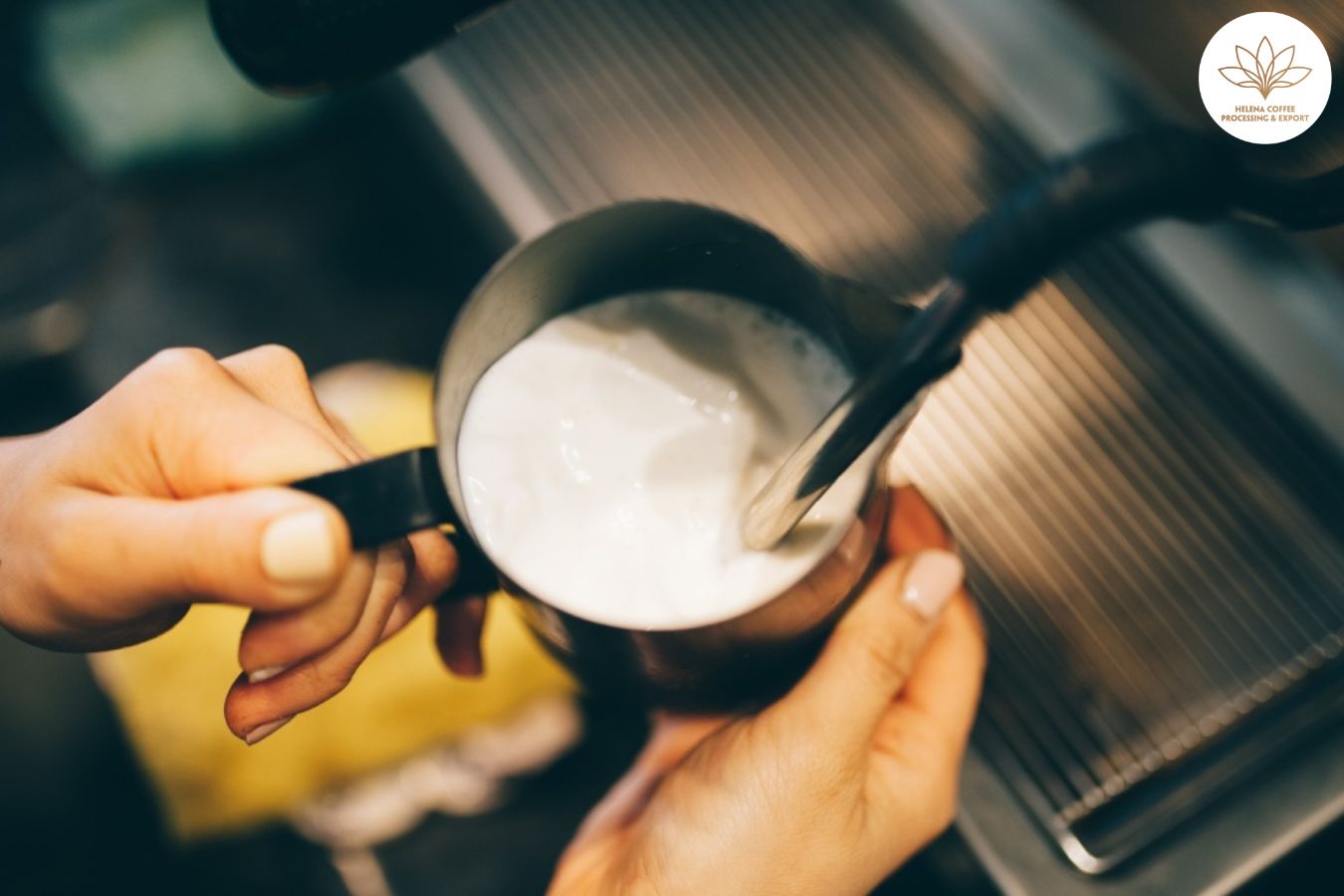
How to foam milk without steam: For professionals and consumers alike, a well-textured latte drink, such as a latte , flat white , or cappuccino , is a highly desirable sensory experience. While espresso plays a key role in the quality of the drink, the texture of the steamed milk is also essential.
Now, milk steaming is a very difficult process to learn and master. It typically takes baristas months to do this effectively.
Additionally, in recent years we have seen more and more coffee shops and roasters invest in automated milk frothing solutions for a variety of reasons.
To learn more about the benefits of frothing milk, I spoke with Umberto Majer, president and CEO of VEA Ventures , and Jaime Gamoneda, commercial director of Heylo Coffee . Read on to find out his opinions.
The challenges associated with milk steaming
At first glance, the process of steaming milk seems relatively simple.
“To prepare steamed milk in the traditional way you have to use a steam wand,” explains Umberto. “This heats the milk [to the necessary temperature] and creates a foamy texture.”

All in all, it is essential to understand the science behind steamed milk because a series of important molecular changes occur:
- When milk is heated, its proteins elongate and break down.
- When we add air to milk when heating it, the proteins form bubbles around the air.
- One end of a milk protein is hydrophilic (attracts water), while the other end is hydrophobic (repels water).
- This means that, inside each bubble, the hydrophilic end attracts the liquid. For its part, the hydrophobic end attracts air, keeping the bubble intact and forming a stable microfoam.
Poor vaporization techniques
Although it may seem quite simple, if a series of good practices are not followed when steaming milk, the barista can end up getting poor results in the cup. For example, if the tip of the wand is too exposed or too high above the surface of the milk, large bursts of air will be introduced into the milk. This will create too much foam, resulting in an uneven texture.
On the other hand, if the tip of the frother is not exposed enough and is too far from the surface, the milk will be heated but not enough air will be introduced into the liquid. This will produce very little foam (aka wet milk).

According to the Specialty Coffee Association (SCA), the recommended temperature for heating milk is 55 to 65°C (139 to 149°F) . If a barista heats milk above 70°C, he runs the risk of denaturing the proteins and therefore not producing microfoam.
“The difficulty with traditional steaming milk is balancing the time and amount of steam and heat you introduce into the liquid, as well as getting the right texture,” says Umberto. “If you make a mistake, you can end up with watery, burnt, or cold milk, even with too many or few bubbles.”
Adding water
Umberto explains that when traditional steaming methods are used, 10 to 15% of the water produced by steam is added to the milk.
“Even with high-quality espresso machines , the minimum amount of water added is still around 8%,” explains Jaime.
In practice, this means that the milk becomes diluted and loses some of its creaminess and richness. Consequently, the consumer experience is negatively impacted and the best results are not obtained from espresso- based drinks .
Does milk foam work better for specialty coffee?
Taking into account the difficulties associated with traditional steaming of milk, we must ask ourselves: is it better to heat milk without using steam?
Even if a barista makes a high-quality, evenly extracted espresso , it will inevitably taste bad if combined with poorly steamed milk, overshadowing the hard work put in throughout the supply chain. With customers paying increasingly higher prices in cafes, it has never been more important that the quality and consistency of dairy drinks remains high.
Furthermore, in addition to maintaining quality and consistency, specialty coffee shops must focus on efficiency. The need to balance all three elements equally has led some coffee shops to invest in automated milk frothing solutions.
“ Heylo’s Milk Module , for example, uses valves to add air to the milk,” says Umberto. “Other systems, meanwhile, use steam in an automated closed circuit to froth and heat the milk.”
Jaime says that Heylo’s frothing technology results in a foamed milk made up of around 90% foam. This creates a thick, dense texture as no water has been added to the milk when steaming it.
“We use an air pump to inject air into the milk before heating it,” he explains. “In turn, we can ensure that all the liquid is heated evenly at the same time.”
Regulate the temperature
Umberto says that automated solutions for frothing milk also allow for better control of heat transfer.
Baristas often have to multitask. In addition to serving drinks and frothing milk, they may be serving food, interacting with customers, and communicating with colleagues. At such times, it is easy to overheat the milk, burning its sugars and denaturing its proteins. Likewise, heating milk too quickly can have negative effects.
“Heating without steam can be gentler,” explains Umberto. “Also, it can give baristas more control over how the milk is heated.”
Is foaming better than vaporizing?
Although traditional espresso machines are a part of many coffee shops around the world, automating the way you steam milk has several advantages.
One of the most notable is the waste of milk. A study by the University of Edinburgh estimates that one in every six cartons of milk produced in the UK is thrown away or lost , and cafes are undoubtedly responsible for some of this waste.
“When steaming milk, baristas tend to dump a small amount at the bottom of the jug because it is too ‘wet’ to make latte art or they have used too much milk,” says Umberto. “In contrast, high-quality automatic milk frothing systems waste less than 1% of the milk used.”
Reduce energy consumption
For an espresso machine to produce steam on demand, its boiler must be well maintained and running constantly. This can not only increase energy costs but can have a significant impact on the environment.
However, milk frothing solutions that use induction heating block technology, such as Helyo, consume less energy than traditional machines. Ultimately, this means that a coffee shop can reduce both its costs and its carbon footprint.
Space and efficiency
Many milk frothing solutions are modular systems , meaning they are smaller than traditional espresso machines . Thus, they not only help save counter space but can help improve workflow and efficiency.
For example, some automated milk frothing systems are capable of frothing various types of milk, including plant-based milk.
“The Heylo Milk Module can supply two types of milk as standard, with the option of adding another type,” says Jaime.
Umberto explains that different types of milk require different steaming techniques, so baristas can find it difficult to achieve consistent results.
“Plant milks vaporize differently from each other,” he says. “With some you have to vaporize for longer or add more air, while others require lower temperatures, for example.”
“In addition, non-dairy milks are more watery than cow’s milk, so the risk of dilution is even greater,” he adds. “Using an automatic milk frothing system can produce better results.”
The increasing adoption of automation
Without a doubt, one of the biggest coffee industry trends we are seeing in 2023 is a growing reliance on automation.
“Vaporizing is not always a value-added activity,” says Umberto. “We are on the verge of a revolution in which automation will take over milk frothing.”
“Ultimately, this will translate into higher quality drinks and allow baristas to focus more on the art of latte art,” he adds.
Jaime, for his part, believes that steam still has its place in specialty coffee.
“Steaming milk and making latte art is part of being a barista,” he says. Still, he adds that as a result of staff shortages and rising costs, he believes the role of automation in coffee shops will continue to grow.
The process of steaming milk has been part of coffee specialties for a long time and is highly appreciated by many baristas around the world. Now, given the increasing attention paid to the quality of drinks, it is important to look for new ways to prepare them.
More and more milk frothing solutions are appearing on the market that use induction heating and other steam-free methods. Regardless of your opinion about them, I’m sure that in the future more and more cafes will start using them.
FAQS: